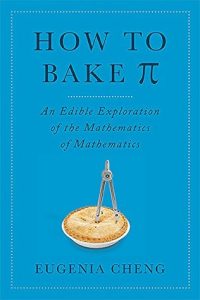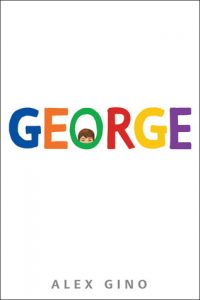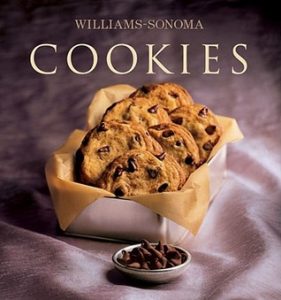 I know basically every celebration of pi day (March 14, because pi = 3.14…) turns into a celebration of pie, and I’d never say no to pie, but what if we could celebrate with delicious pies while also learning more about what math is at the same time? Conveniently enough, Eugenia Cheng, author of X + Y, has already done this for us: How to Bake π.
I know basically every celebration of pi day (March 14, because pi = 3.14…) turns into a celebration of pie, and I’d never say no to pie, but what if we could celebrate with delicious pies while also learning more about what math is at the same time? Conveniently enough, Eugenia Cheng, author of X + Y, has already done this for us: How to Bake π.
Now, I’m going to take a bit of a detour away from tasty delicious pie and into the world of knitting for a brief moment. Upon asking a college classroom what came to mind when asked about mathematics, math professor Sara Jensen found the top two words were “calculation” and “equation”. Asked the same question, professional mathematicians gave quite a different response: “critical thinking” and “problem-solving”. Which prompted Jensen to “eliminate pencil, paper, calculator (gasp) and textbook from the classroom completely. Instead, we talked, used our hands, drew pictures… And of course, we knit” (Jensen, Why I Teach Math Through Knitting), in an attempt to bridge the gap between how students approached math (calculating equations, memorizing proofs…drudgery) and how math could actually be used as a tool, engaging learners by making the learning interesting and more hands-on. I’ve joked before about how I’ve done more linear algebra while knitting than learning it in class, and certainly with more of a vested interest in how the abstract numbers translate to the physical object! And I’ve also thanked Pythagoras before for imparting his theorem to us while figuring out how to calculate length as I knit on a bias. In fact, I have found myself wanting to engage more with math as I knitted more and more, making alterations and designing my own items – it’s all the same math I learned by rote back in school, approached with a lot more enthusiasm now in comparison, and willingly at that!
And it’s exactly this work of transforming how we think of math, from equations and calculations to problem-solving and critical thinking, that Cheng does in How to Bake Pi. She makes math fun to learn, and accessible to audiences of varying levels of math knowledge, which is quite a feat!

